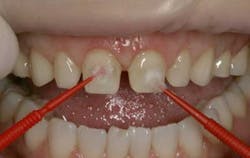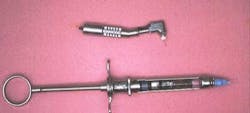Digital X-rays: helping to educate younger patients
By Parag R. Kachalia, DDS© Dreamstime.com
Children are notorious for their curiosity. They want to know the whys and the hows about everything. That enthusiasm for gathering information can be a great asset to their dental health. Dental radiography can help in this quest. My younger patients, as well as their parents, benefit from the visualization of my explanation that clear, detailed digital X-rays can provide. One of the most compelling benefits of digital radiography, especially with my sensors (Gendex GXS-700™), is patient education. Kids are accustomed to computers and television. I can imagine that if I held up a small film X-ray, they would overlook the small details that affect my diagnosis. To a child caries on a traditional film may just look like a tiny dot. However, images displayed on my 20-inch monitor show teeth and their conditions maximized to its fullest. I review each image with the patient, or with the patient and parent, pointing out the areas of concern and possible treatment options. Inevitably, all ages are intrigued by the details, and also by the fact that they can actually understand the scope of the dental issues reflected by the X-rays. I can draw on the image to show anything from unerupted teeth and caries involvement to healthy views, to emphasize my diagnosis even more by comparison.
Younger patients also appreciate that their experience in the dental radiography chair is more comfortable and shorter. My sensors have rounded corners and smooth edges, and they come in two sizes, one that is just right for my younger patients. The Size 1 “pedo” sensor was designed to be closest in size to the most widely used X-ray film for children. The sensor’s shape also facilitates quick movement around the mouth, shortening capture time. With the new sensors, gag reflex problems are far fewer. And, the immediacy of the images fascinates them and gets them more excited about dental visits.Clear images, two sizes, and direct USBWhen I need a consult quickly — in the case of a consultation with the child’s orthodontist (or other specialists for my adult patients) — my team can electronically and securely share the images, and we can discuss the case over the phone so we can get treatment started right away. The same is true for sending information to patients and insurance companies. Children and adults need to understand what is happening, so they will want to follow through with proper dental treatment and care. When patients leave my office, they are not thinking about their treatment and asking why I suggested it; they are thinking about their future dental health and asking why not?
Dr. Kachalia is an assistant professor at the University of the Pacific, School of Dentistry. He is the director of new technologies and is a faculty member within Pacific’s prestigious complex and esthetic rehabilitation program. He is a researcher, published author, and speaks internationally on restorative dentistry, CAD/CAM dentistry, and dental technologies. He maintains a private practice in San Ramon, Calif., with his wife, Dr. Charity Duncan-Kachalia, and is a member of the Pride Institute Technology Leadership Council.



